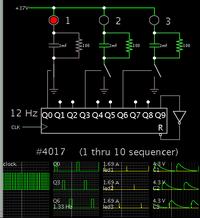Mexbungalows
Newbie level 3

It all starts with an ambulance and a need for really bright emergency lights. This is in Mexico so a three thousand dollar Federal Signal or Code 3 light bar is out of the question. I have to use the existing incandescent light bar and convert it.
I've resolved the 30 watt,36 volt LED chip heatsink issue.
But I need to strobe 36 volt chips with a 12 volt source.
Ignition to conventional LED strobe controller for strobe trigger control.
Strobe controller powers (2) 40-amp 60-volt rated solid state DC/DC relays for control circuit.
600-watt DC to DC booster to change strobed 12 volt signal to 36 volts (strobed).
I am working with a lot of unknown material. Can the commercial solid-state relays amplify a 60 Hz strobe effectively?
I've resolved the 30 watt,36 volt LED chip heatsink issue.
But I need to strobe 36 volt chips with a 12 volt source.
Ignition to conventional LED strobe controller for strobe trigger control.
Strobe controller powers (2) 40-amp 60-volt rated solid state DC/DC relays for control circuit.
600-watt DC to DC booster to change strobed 12 volt signal to 36 volts (strobed).
I am working with a lot of unknown material. Can the commercial solid-state relays amplify a 60 Hz strobe effectively?

